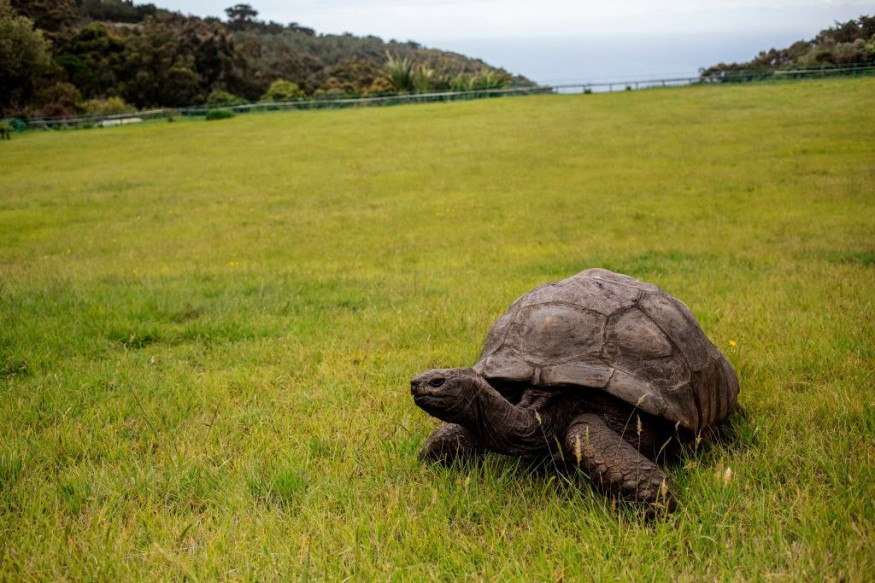On January 12, the Guinness World Records announced that a 190-year-old giant tortoise named Jonathan became the oldest living land animal and oldest tortoise ever recorded.
The Guinness World Records estimated Jonathan was born in 1832, which pre-dates Queen Victoria's ascension to the British throne in 1837. The previous record-holder of the oldest tortoise was named Tu'I Malila who lived to be at least 188 years old before dying in 1965.
Through the Years

According to the Guinness World Records, Jonathan has lived through some major human achievements, such as:
- Thefirst photograph of a person taken in 1838
- Thefirst telephone call made in 1876
- Thefirst incandescent lightbulbinvented in 1878
- The Eiffel Tower's completion in 1887
- Thefirst successful power-driven flighttook to the skies in 1903
- The arrival of Neil Armstrong and Buzz Aldrin on the Moon in 1969
The British National Museum said Jonathan was already 50 years old when he arrived at St. Helena in 1882 as a gift to Sir William Grey-Wilson. More than 31 governors have passed and Jonathan is still living outside the residence of St. Helena's governor along with other giant tortoises David, Emma, and Fred.
With old age, Jonathan is already blind and lost the ability to smell. According to Jonathan's veterinarian, the giant tortoise has maintained his basic instincts like eating, sleeping, and mating.
In addition, Jonathan's preferred food are apple, cabbage, cucumber, carrot, and other fruits. Jonathan is fed by hand once a week to ensure his sustenance of calories. The tortoise still has good libido and is frequently seen mating with Emma and Fred.
Other animals older than the 190-year-old tortoise are living underwater such as Greenland sharks (Somniosus microcephalus) with an estimated life span of at least 272 years.
In addition, other marine species surpassing tortoises are the small jellyfish-like invertebrates called Hydra. These invertebrates continuously regenerate their cells and avoid aging.
Also read: Caught on Cam: Researchers Horrified as 'Vegetarian' Giant Tortoise Attacks and Eats Seabird
Apoptosis Research
Scientists have not yet fully understood how giant tortoises live for an extended period of time.
In a process called apoptosis, the process of programmed cell death, our bodies have the ability to remove unneeded or potentially harmful cells.
This knowledge was the result of the work of many researchers funded by the National Health Institutes of Health. In the case of Giant tortoises, they are able to quickly kill off damaged cells. This ability of tortoises helps prevent the formation and retention of damaged cells, which normally deteriorate as we age.
Carl Vogt first discovered the apoptosis process in 1842, leading to apoptosis research but became dormant for more than a century after. Over the past several decades, there has been an exponential growth in the number of research about apoptosis, according to a study.
The case of Jonathan is only one of the many cases that both laymen and scientists in add curiosity to the processes of a prolonged lifespan of some animals. Further understanding of the research may contribute to the field of medicine and "therapeutic concepts."
© 2025 NatureWorldNews.com All rights reserved. Do not reproduce without permission.





